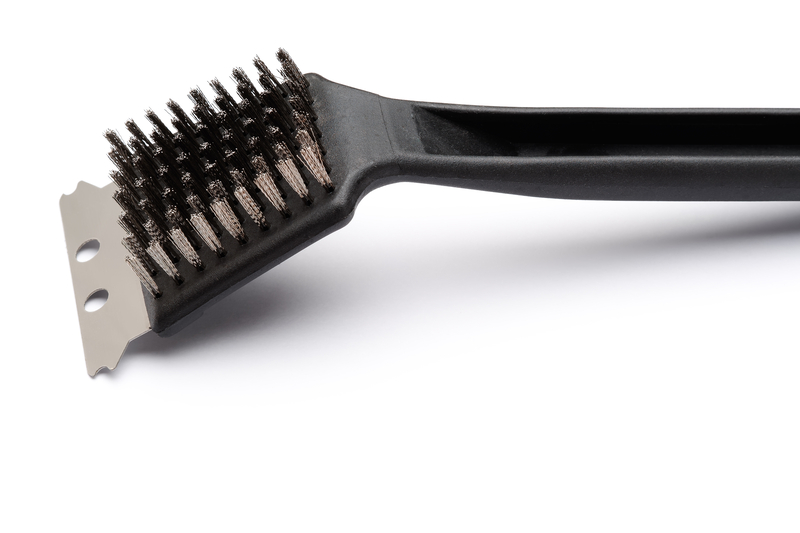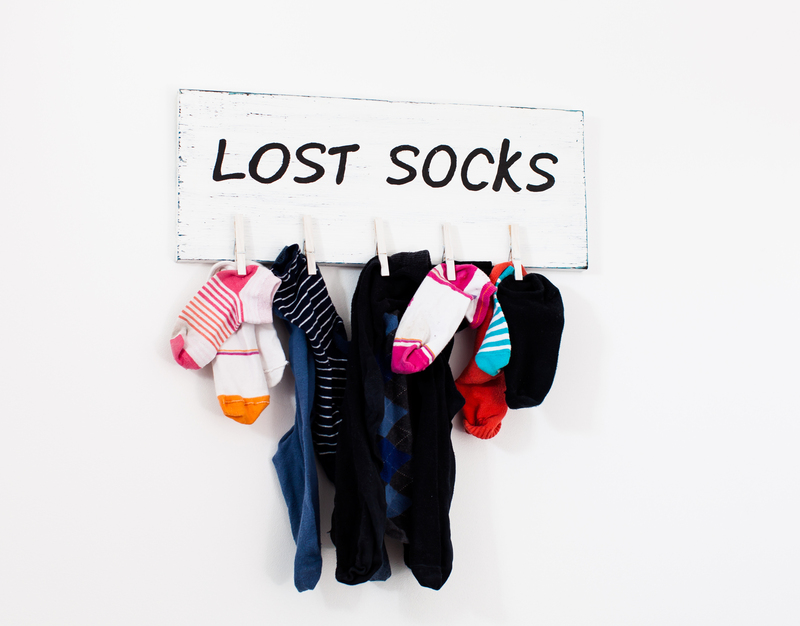Strategies to Minimize Dust and Allergens at Home
Posted on 20/06/2025
Strategies to Minimize Dust and Allergens at Home
Maintaining a clean and healthy indoor environment goes beyond just aesthetic appeal. For millions of individuals, especially those with allergies or asthma, reducing dust and allergens at home is essential for optimal health and comfort. In this article, we'll explore proven strategies to minimize dust and allergens in your living space. Whether you want to make your home a haven for allergy sufferers or simply want a cleaner environment for your family, these tips will guide you on the path toward fresh, breathable air and less sneezing all year round.
Why Is It Important to Reduce Dust and Allergens?
Indoor air quality has a significant impact on our health. According to the Environmental Protection Agency (EPA), indoor air can be two to five times more polluted than outdoor air. The culprits? Dust mites, pet dander, pollen, mold spores, and other allergens that can trigger allergic reactions and respiratory issues. Taking proactive measures to minimize these invaders can result in:
- Reduced allergy symptoms such as sneezing, itchy eyes, and nasal congestion
- Lower risk of asthma attacks and respiratory infections
- Enhanced sleep quality and overall comfort at home
- Safer environment for children, the elderly, and immunocompromised individuals

Top Strategies to Minimize Dust and Allergens at Home
Combating household dust and allergens calls for a comprehensive approach. Below, we explore practical and effective methods for reducing these triggers in every part of your home.
1. Establish a Regular Cleaning Routine
Frequent and thorough cleaning is the foundation of any allergen-minimizing strategy. Here are key practices:
- Dust with damp cloths: Dry dusting stirs particles into the air. Use a *slightly damp microfiber cloth* to trap and remove dust efficiently.
- Vacuum weekly: Invest in a vacuum cleaner with a HEPA filter, which traps tiny particles that standard vacuums may recirculate.
- Mop floors: Hard surfaces should be mopped weekly to pick up any lingering dust, especially in high-traffic areas.
- Don't forget hidden spots: Clean ceiling fans, light fixtures, blinds, and baseboards regularly.
2. Control Humidity Levels
High humidity encourages mold growth and dust mite proliferation, both leading causes of indoor allergies. To reduce dust and allergens in the air:
- Keep indoor humidity levels between 30% and 50% using a humidity monitor.
- Use a dehumidifier in damp areas, such as basements or bathrooms.
- Ensure adequate ventilation in moisture-prone rooms, particularly after activities like showering or cooking.
3. Upgrade and Maintain Your HVAC System
Your home's heating, ventilation, and air conditioning (HVAC) system can either help control or spread indoor allergens. Use these strategies:
- Replace filters: Choose HEPA or high-efficiency filters and change them every 2-3 months, or more often if you have pets or allergies.
- Consider adding an air purifier with a HEPA filter to capture airborne particles.
- Schedule regular HVAC maintenance to prevent buildup of mold and dust in the ducts.
4. Reduce Clutter
Cluttered spaces create more surfaces for dust to settle and are harder to clean. Keep counters, shelves, and floors as clear as possible. Organize items in closed storage bins or cabinets rather than leaving them out in the open, which not only reduces dust in the home but also gives your space a neat appearance.
5. Choose Low-Allergen Furnishings and Surfaces
The materials and items in your home can greatly impact allergen levels. Consider these approaches:
- Opt for hard flooring: Hardwood, tile, or linoleum do not trap dust and allergens as carpets do. If carpeting is necessary, choose low-pile and vacuum frequently.
- Washable decor: Use machine-washable curtains, pillow covers, and throws. Wash them in hot water (130?F or higher) every 1-2 weeks to kill dust mites.
- Limit upholstered furniture: Stick with leather, vinyl, or wood options that are easy to wipe down.
6. Employ Allergen-Proof Bedding
The bedroom can be a hotspot for dust mites due to mattresses, pillows, and bedding. Follow these steps to create a low-allergen bedroom:
- Use allergen-impermeable mattress and pillow covers to block dust mites.
- Wash all bedding in hot water weekly.
- Replace synthetic-filled pillows every 1-2 years, and avoid feather or down bedding that may harbor dust mites.
7. Keep Pets Clean and Off Furniture
Pets can bring in outdoor allergens and shed dander. Here's how to reduce pet dander at home:
- Bathe and groom pets regularly, preferably outdoors or by a professional.
- Keep pets out of bedrooms and off furniture as much as possible.
- Use washable pet beds and clean them frequently.
- Vacuum and mop pet play areas often.
8. Prevent Mold Growth
Mold not only causes allergies but can damage your home. Minimize mold spores indoors by:
- Fixing leaks as soon as possible.
- Using exhaust fans in bathrooms, kitchens, and laundry rooms.
- Cleaning visible mold with appropriate cleaners and discarding heavily contaminated items.
- Investing in a HEPA-filter air purifier for added protection.
9. Maintain Clean Entryways
Shoes, coats, and bags can bring dust, pollen, and other outdoor allergens inside. Create barriers and establish habits such as:
- Using doormats at every entrance and cleaning them regularly.
- Encouraging everyone to remove shoes before entering.
- Storing outdoor gear in a mudroom or designated area away from main living spaces.
10. Schedule Professional Deep Cleanings
Despite your best efforts, some allergens can accumulate in places beyond your regular reach. Professional cleaning services can deep clean carpets, upholstery, curtains, and air ducts, offering a periodic reset for reducing dust and allergens in your home.
Room-By-Room Guide: Minimizing Household Dust and Allergens
Different rooms require unique attention and strategies for managing allergens effectively. Here's how to optimize common areas:
Living Room
- Vacuum sofas and chairs using HEPA-equipped vacuums, or wipe down hard surfaces regularly.
- Declutter coffee tables and open shelving to reduce dust buildup.
- Wash throws and pillow covers in hot water regularly.
Bedroom
- Follow all allergen-proof bedding steps.
- Remove non-washable stuffed animals or wash them weekly.
- Keep windows closed during high pollen seasons.
Kitchen
- Clean behind appliances and inside cabinets regularly.
- Use an exhaust fan while cooking to reduce humidity and airborne particles.
- Store food in airtight containers to prevent pest allergens.
Bathroom
- Wipe down surfaces, including shower curtains and bathmats, weekly.
- Run vent fans after showers to dry out moisture quickly.
- Address any leaks or drips promptly to avoid mold growth.
Natural Remedies: Healthy Alternatives to Harsh Chemicals
Many cleaning products contain fragrances and chemicals that can irritate sensitive individuals. For a healthier approach to reducing allergens at home:
- Opt for unscented, hypoallergenic cleaners available commercially.
- Make your own solutions with ingredients like vinegar, baking soda, and lemon for a non-toxic clean.
- Use steam cleaners on hard surfaces and upholstery to both clean and sanitize without chemicals.
Key Takeaways and Ongoing Maintenance
Implementing these strategies to minimize dust and allergens in the house will make a significant difference in your daily comfort and long-term health. Remember, consistency is key. Establish a weekly and monthly maintenance plan tailored to your household's needs. Enlist family members to share in the upkeep, and stay alert for potential problem spots, such as water leaks or forgotten clutter zones.
Summary: Breathe Easier in Your Home
To summarize, tackling household dust and allergens requires a layered approach -- from regular cleaning and organization to investing in top-tier air filters and making mindful design choices. By following these home dust and allergy reduction strategies, you will not only enhance your indoor environment but also protect the health and well-being of everyone in your home.
Start today by choosing one or two tips from this list and gradually incorporating more practices as they become part of your routine. Over time, you'll notice fresher air, fewer allergy attacks, and a more comfortable, inviting living space for all.

Frequently Asked Questions
Can air purifiers really help minimize allergens at home?
Yes, especially those with HEPA filters. They capture extremely small particles like pollen, dust mite debris, and pet dander, providing continuous reduction of airborne allergens.
How often should I wash bedding to reduce dust mites?
Wash sheets, pillowcases, and blankets in hot water once a week. Using dust-mite proof covers on mattresses and pillows adds extra protection.
Should I remove all carpets to prevent allergies?
While hard flooring is best for minimizing allergies, if carpet is necessary, select low-pile types and vacuum with a HEPA-filter vacuum weekly. Have carpets professionally cleaned annually.
What's the best way to control humidity?
Use a dehumidifier and monitor levels with a hygrometer. Keep humidity below 50% to discourage dust mites and mold.
Is there a safe way to clean for people with sensitivities?
Opt for *fragrance-free, non-toxic cleaners* or make your own from household ingredients like vinegar and baking soda. Ventilate your home while cleaning to disperse any lingering fumes or dust.
Final Words
Investing time in these effective strategies to minimize dust and allergens at home will reward you with better health, cleaner surroundings, and peace of mind. Regular effort and smart choices can truly transform the air you breathe and the quality of life in your personal sanctuary. Breathe easy--you've got this!


